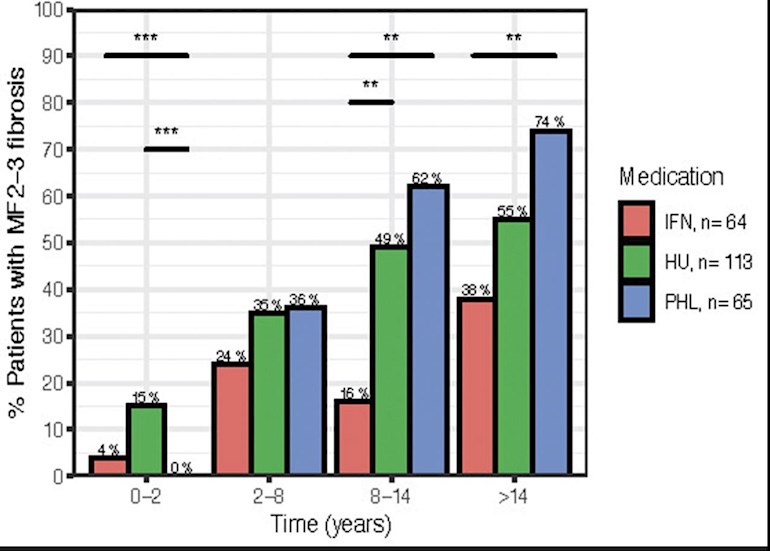In this recent post "Phase 3, Trial ..." there was an unexpected result that HU was more effective than INF on marrow remission. Many of us, including the authors of the study, were surprised, esp as some of us plan to switch to INF.
healthunlocked.com/mpnvoice...
ashpublications.org/blood/a...
--
Looking through studies we've seen before including here in "Long Term..."
healthunlocked.com/mpnvoice...
ashpublications.org/blood/a...
there is a figure I've not noticed before, see here. Like the survival and progression data in the report it's part of, it shows INF to be best, in the long term, with HU also good.
--
But quite interesting, in this chart, INF is clearly inferior to HU in the early years (0-2) to (2-8) (500% rise in progression INF vs ~130% HU) but provides remission to years (8-14) (33% remission INF vs 40% progression HU)
** "Phase 3" went only 1 or 2 years so maybe this is the answer to the surprising result; the study caught only this early inferior marrow INF effect. As is familiar, INF needs longer studies to measure properly.
Some other of the discrepancy between "Phase 3 Trial" and "Long Term INF" may be from the different things measured. "Phase 3" measured a broad category of marrow results, (histopathological) while "Long Term" measured only fibrosis. My recent searching indicates that INF has less effect on cellularity than fibrosis. If Long Term INF is relevant, fibrosis is an important survival/progression measure, while celluarity is not addressed here in survival/progression.
In a separate note after 14 years, INF starts to rise faster than HU. Maybe allele on INF rises too after that much time?
